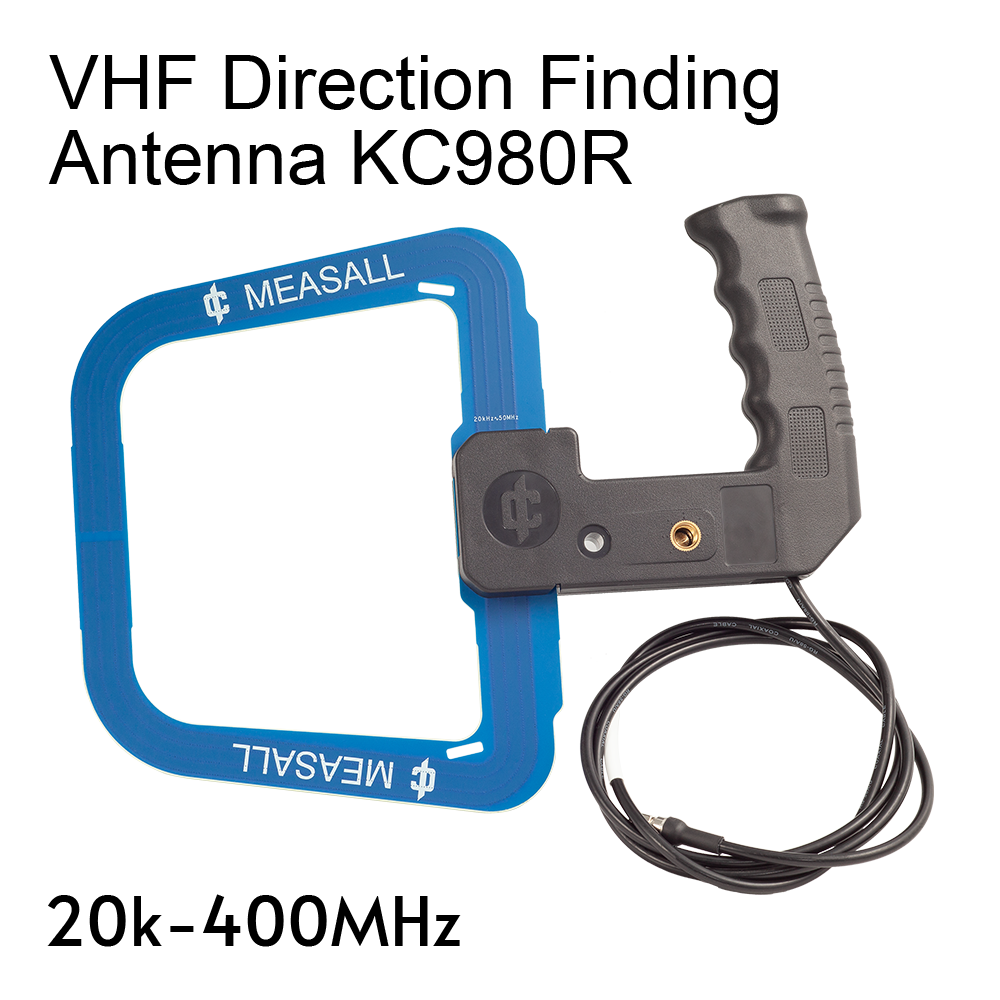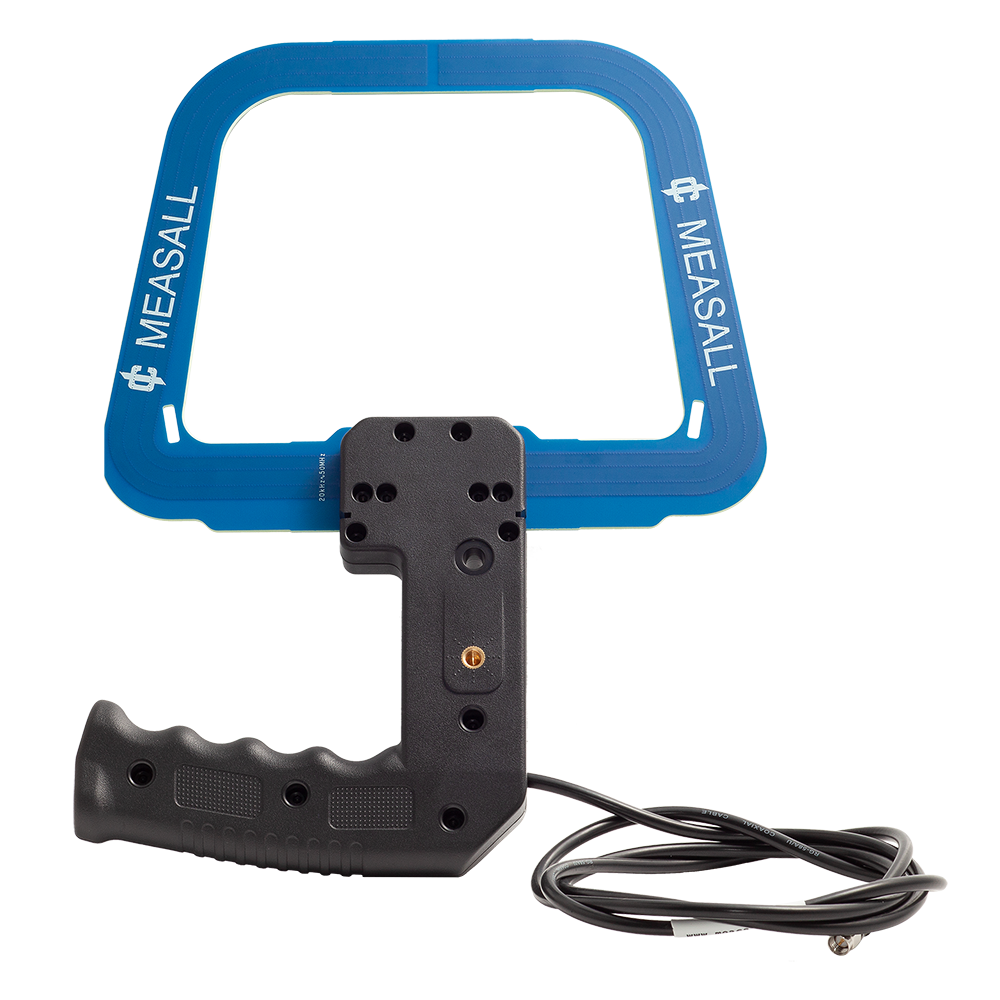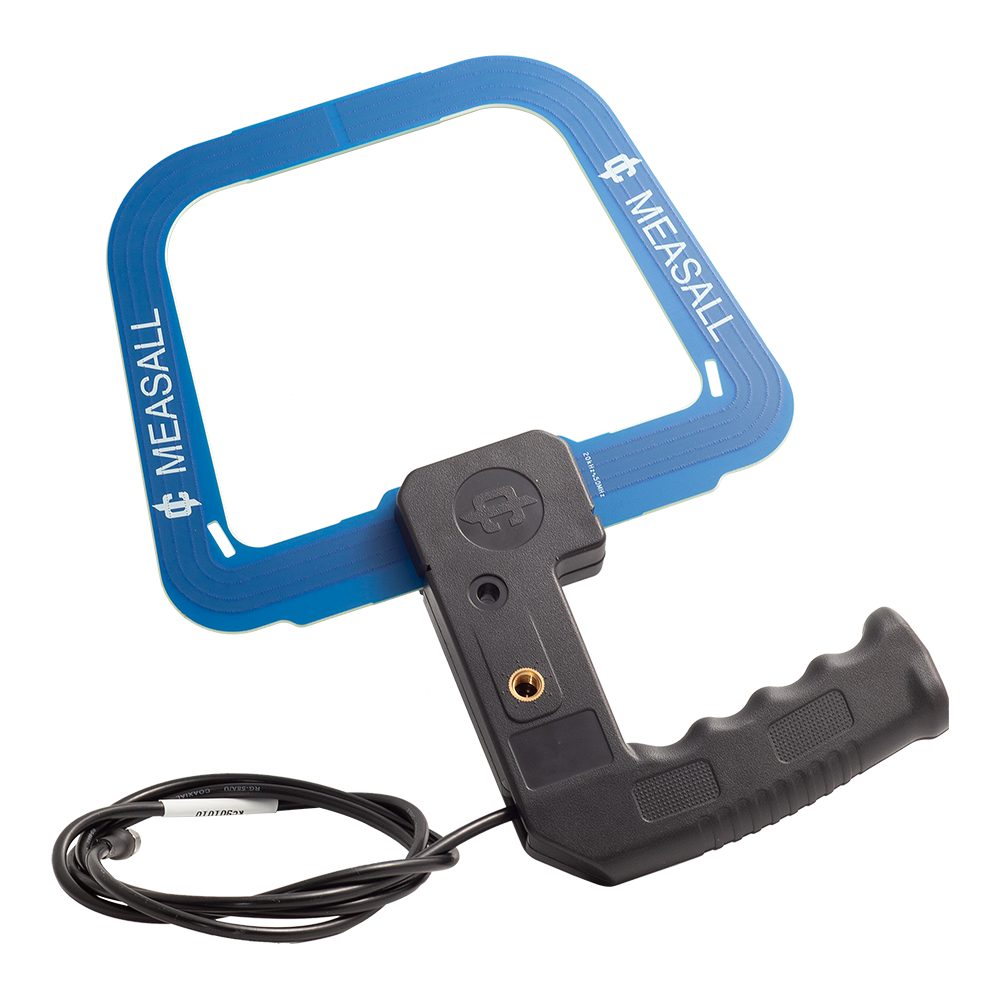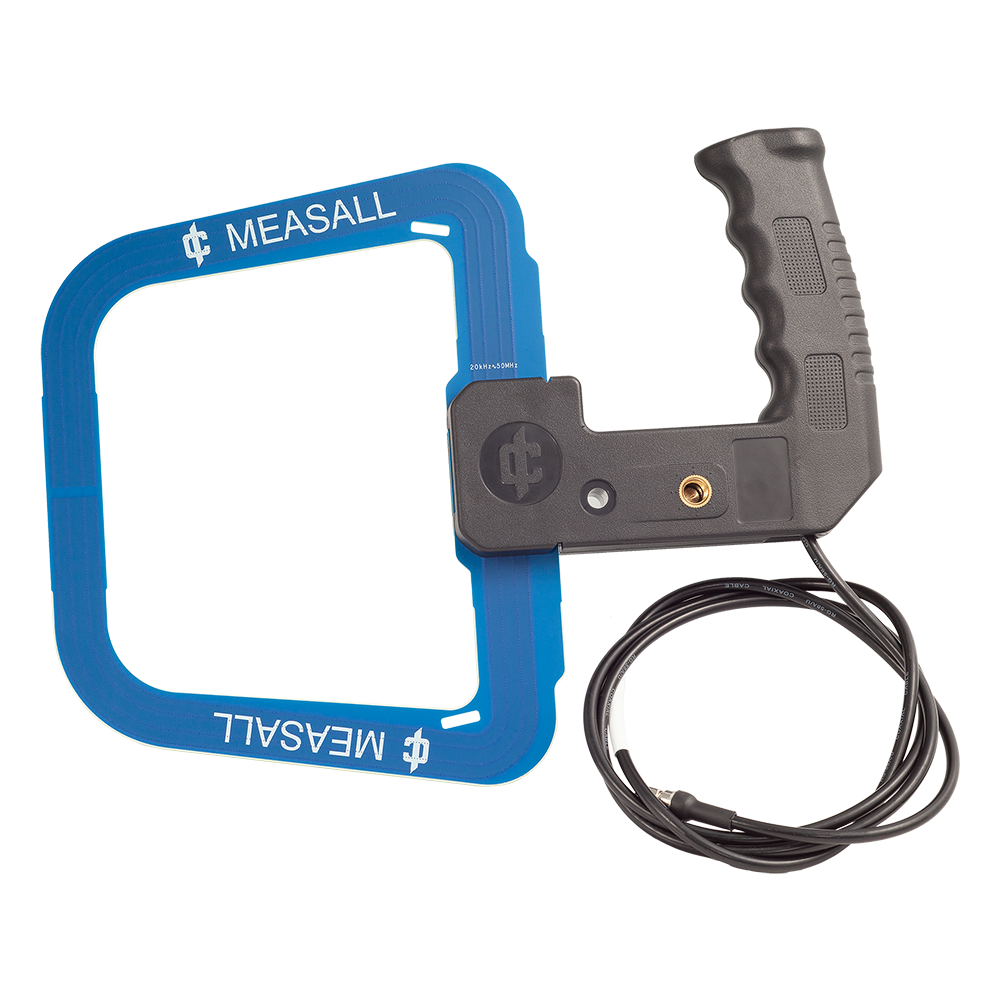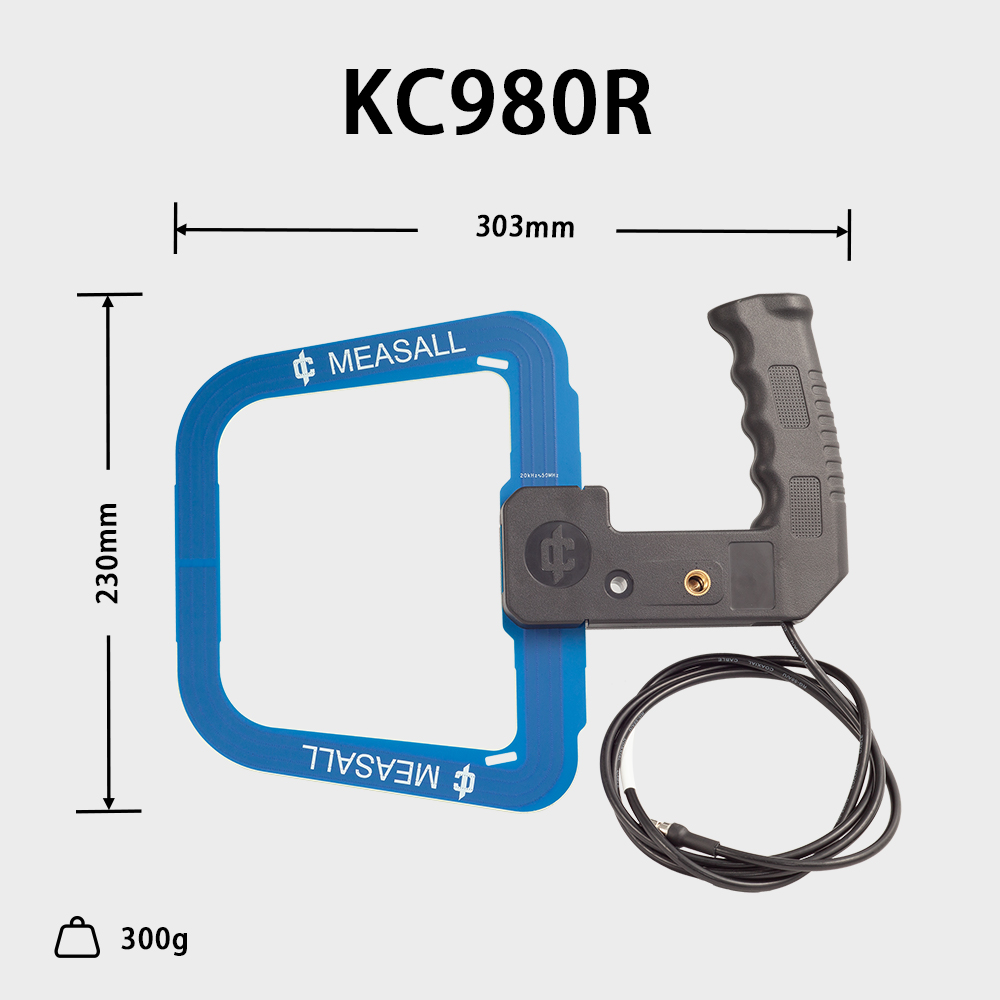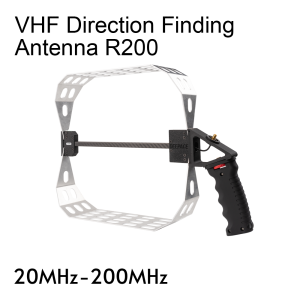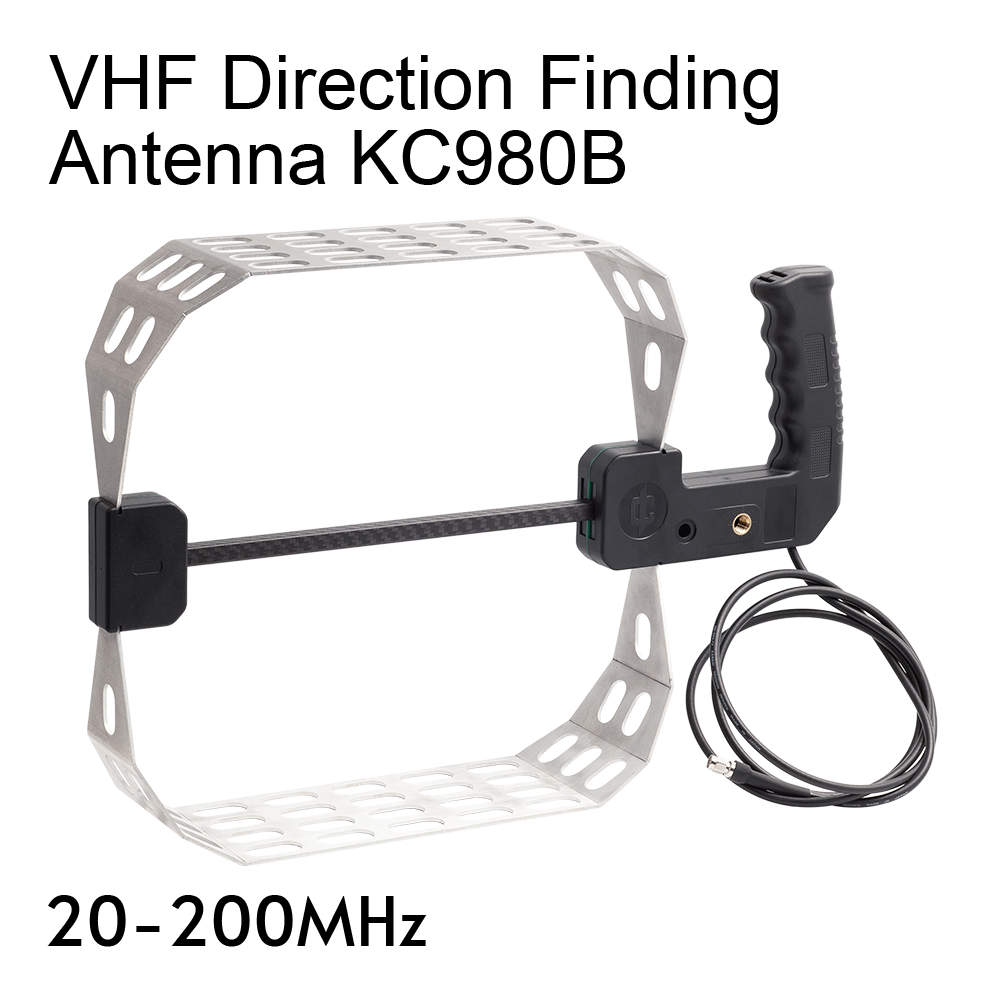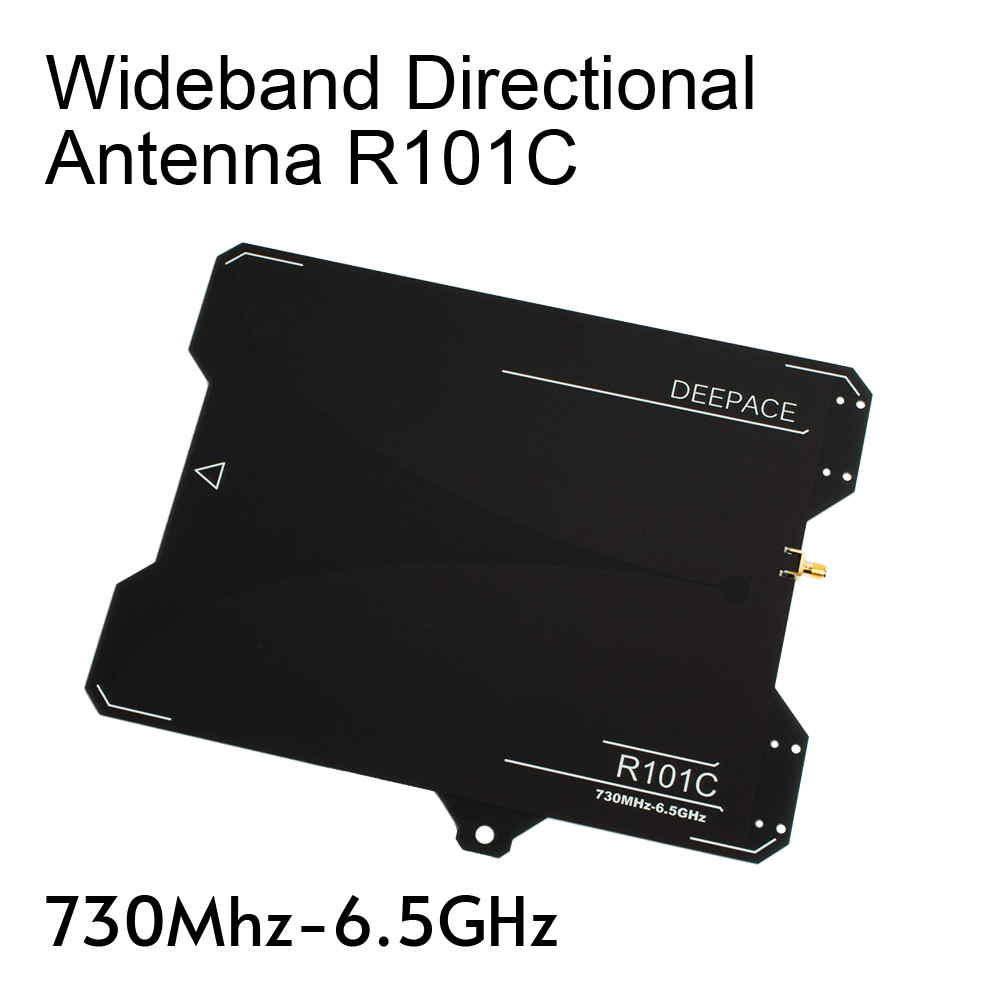Description
KC980X represents a series of directional antennas featuring a consistent handle design. They are primarily used as accessories for spectrum analyzers and reconnaissance receivers, supporting applications such as transmitter detection, radio direction finding, near-field electromagnetic interference (EMI) troubleshooting, and, for certain models, field strength measurement. This series is characterized by a wide frequency range, moderate size, ease of portability, and robust construction, making it well suited for handheld use in both indoor and outdoor environments.
As of now, the KC980X series includes the following models:
| Model | Type | Frequency Range |
| KC980A | Shielded Loop | 9kHz~100MHz |
| KC980R | Shielded Loop | 20kHz~400MHz |
| KC980B | Hybrid Loop | 20~200MHz |
| KC980S | Hybrid Loop | 30~350MHz |
| KC980C | Hybrid Loop | 50~500MHz |
| KC980D | Log-Periodic | 350MHz~9GHz |
1.KC980A and KC980R
Both are pure magnetic field antennas with minimal response to electric fields. The main difference between the two extended models, A and R, lies in the size of the loop. Shielded loop antennas respond to magnetic fields over a broad frequency range and perform better at low frequencies (e.g., below 30 MHz) than hybrid loops or other types. However, at higher frequencies, magnetic field antennas generally have lower gain than electric field antennas. Therefore, the KC980A and KC980R are mainly used for detecting low-frequency electromagnetic waves.
Shielded loop antennas do not have a strictly defined nominal frequency range. Their usable frequency depends on the strength of the original electromagnetic field, required sensitivity, and the desired antenna directionality. At low frequencies, because they behave as “small antennas,” their gain decreases as frequency decreases; however, when electromagnetic radiation is strong enough, sufficient reception levels can still be achieved. This type of antenna exhibits a high standing wave ratio (SWR) and is not suitable for transmission.
Directionality
At low frequencies, in the direction parallel to the antenna plane, the KC980A/R behaves nearly as an omnidirectional antenna, with a disc-shaped radiation pattern. When used for direction finding, attention must be paid to distinguishing the front from the back. Starting at around 15 MHz, the radiation pattern in the antenna plane begins to split, with a larger front lobe and smaller rear lobe, which is advantageous for direction finding. In the direction perpendicular to the antenna plane, the pattern takes on a figure-eight shape, with the main lobes pointing radially outward. Therefore, when the antenna is used in a vertical orientation, it can be used for horizontal direction finding, while when laid flat, it can be used to roughly estimate the signal’s elevation angle.
The figure below illustrates the directionality of KC980A/R; users should summarize experience based on these characteristics.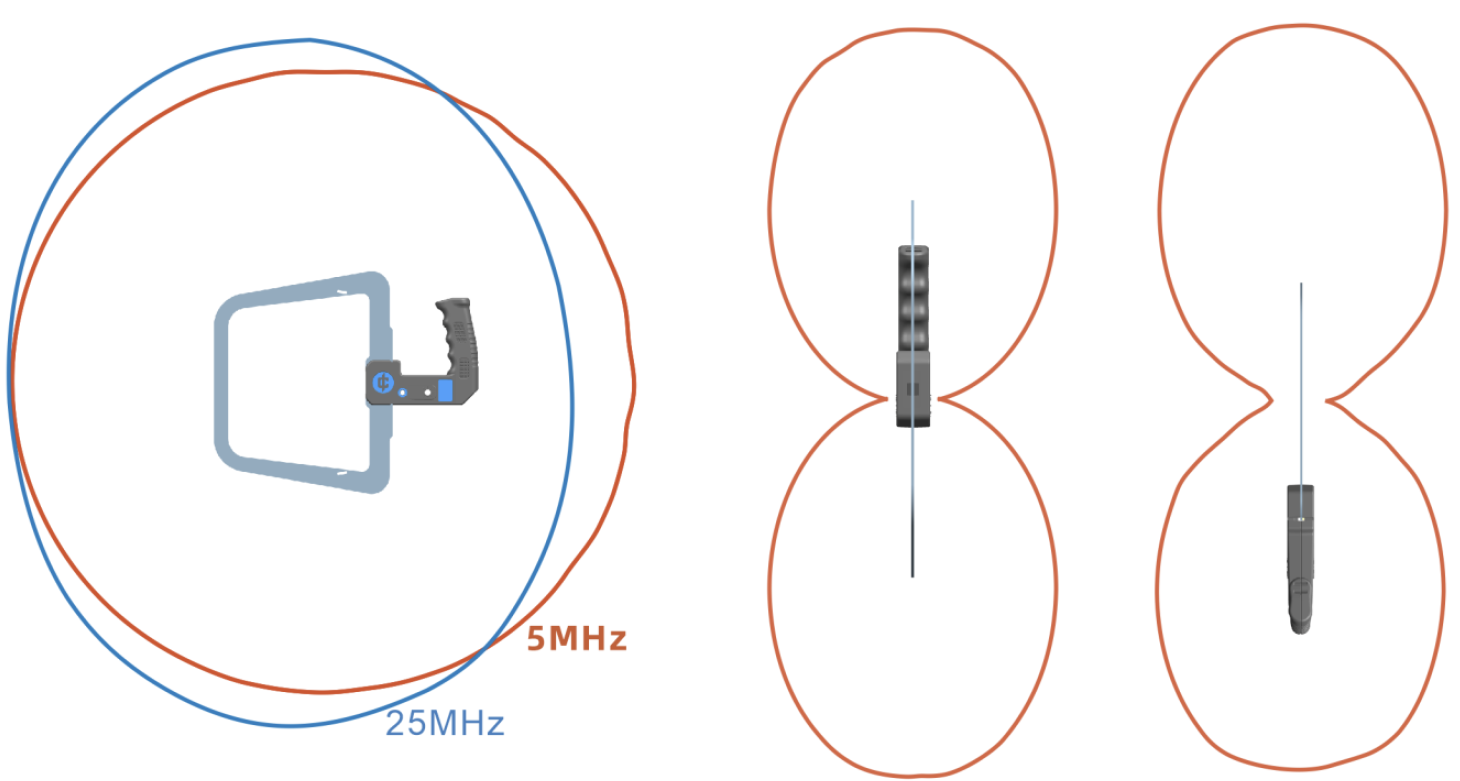
From near DC, the antenna maintains the above directionality (with some changes in lobe shape) up to higher frequencies. As frequency continues to rise, the radial pattern also splits, gradually becoming a figure-eight shape perpendicular to the antenna plane, with main lobes along the axis.
The frequency at which the radial pattern splits depends on the loop circumference: about 300 MHz for KC980A and about 400 MHz for KC980R. At high frequencies, KC980A/R remain magnetic field antennas.
In theory, only the KC980R and KC980D antennas are required to cover the range from low frequencies up to 9 GHz, making them convenient for close-range searches and applications with moderate sensitivity requirements.
However, the KC980A and KC980R show a significant gain advantage only in the shortwave band. Above 40 MHz, the KC980B and KC980C offer higher gain in the intended direction, with a smooth gain response and a cardioid radiation pattern. Therefore, when conditions allow or when signals are weak, it is advisable to select a more suitable antenna.
Gain
The table below presents the near-field received signal levels (in dBm) of the KC980S, KC980A, and KC980R antennas when receiving signals from the same electrically small transmitting antenna. Measurements were taken in a typical large indoor environment. It is evident that the KC980A and KC980R demonstrate a clear advantage at low frequencies.
| frequency | KC980S | KC980R | KC980A |
| 50MHz | -45 | -53 | -52 |
| 20MHz | -61 | -56 | -53 |
| 10MHz | -78 | -68 | -65 |
| 5MHz | -86 | -78 | -72 |
| 1MHz | -108 | -102 | -97 |
The table below presents the received signal levels measured in a 10-meter semi-anechoic chamber, where two identical antennas serve as the transmitting and receiving antennas. They are aligned and positioned 10 meters apart at a height of 2 meters. Due to the lack of precise methods for measuring the gain of low-frequency antennas, these data are provided for reference only.
| Frequency
MHz |
Output Power
dBm |
Received Level (dBm) | Imputed Gain(dBi) | ||
| KC980A | KC980R | KC980A | KC980R | ||
| 1 | 17 | -129.8 | -136.0 | -77.2 | -80.3 |
| 2 | -122.1 | -132.5 | -70.3 | -75.5 | |
| 5 | -109.5 | -120.4 | -60.0 | -65.5 | |
| 10 | 16 | -94.5 | -103.2 | -49.0 | -53.4 |
| 15 | -87.6 | -94.7 | -43.8 | -47.4 | |
| 20 | -83.4 | -89.2 | -40.5 | -43.4 | |
| 30 | -73.7 | -81.4 | -33.9 | -37.7 | |
| 50 | -76.9 | -75.6 | -33.2 | -32.6 | |
| 100 | -70.1 | -87.6 | -26.8 | -35.6 | |
| 200 | -49.9 | -67.5 | -13.7 | -22.5 | |
| 300 | 12 | -31.5 | -46.5 | -0.8 | -8.3 |
| 400 | -43.2 | -40.2 | -5.4 | -3.9 | |
The KC980X series is primarily used for direction finding. Except for the KC980D, when used for field strength measurement, please note that the above data represent the antenna gain in the antenna’s direct forward direction and may not reflect the maximum gain.
Mechanical Parameters
| Name | KC980A | KC980R | Remarks |
| Dimensions/mm | 370×310×27 | 303×230×27 | Excludes cable |
| Cable Length/m | 1.35 | 1.35 | Measured from handle surface |
| Net Weight/g | 330 | 300 | Including cable |
| Packaging Size/mm | 600×410×150 | 365×265×85 | 2 pieces per carton |
| Total Packaging Weight/kg | 2.5kg | 1kg | 1 piece per carton |
Note: Parameters have random errors and are for reference only.

